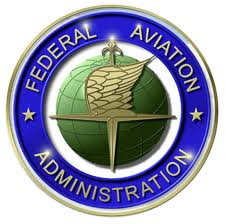
 Upset Prevention and Recovery Training (UPRT) in training requirements and recommendations. For the FAA it comes as a part of the recent Certification Training Program required of candidates for the Airline Transport Pilot rating. ICAO recommendations UPRT in actual flight for all pilots prior to Commercial Licensing.
Upset Prevention and Recovery Training (UPRT) in training requirements and recommendations. For the FAA it comes as a part of the recent Certification Training Program required of candidates for the Airline Transport Pilot rating. ICAO recommendations UPRT in actual flight for all pilots prior to Commercial Licensing.
The following notes are provided as a distillation of lessons learned from extensive experience at APS in delivering Upset Prevention and Recovery Training (UPRT) instruction to thousands of pilots over a multi-year period. These thoughts were compiled in the hope that UPRT can be introduced correctly and safely resulting in a lowering of the worldwide Loss of Control In-flight (LOC-I) accident rate.
1. Change: The prominence of the LOC-I accident rate is clear from the statistical evidence in accident data. If how to fix it was equally obvious, it would have already been fixed. One thing is certain though, and that is that if a change in the LOC-I accident rate is desired, certain things must be altered to achieve that result. While some of these changes are small and easy, others may be systemic and difficult. Where the sliding scale of cost/benefit should be set is open for debate, but the fact that change is required is not.
2. UPRT Expertise: Because there is no existing qualification or certification standard for UPRT, anyone who thinks they are an expert on UPRT can be. While there is nothing to say that they are not, in the absence of selective criteria at least one discriminator should be actual experience in the delivery of UPRT specific training. As in most other areas of endeavor, there are lessons learned in the delivery of training that inform the instructor in the field of study being applied.
3. Standard Solutions: As we look for solutions to any problem, it is natural to begin with what we are familiar with. There are two cautions associated with that approach concerning UPRT. The first is that because this is a recently established area of training, there may be fundamental knowledge or skill sets missing from the existing training paradigm. The second is that a solution is likely to entail methodology different from the status quo.
4. Do No Harm: As clear as it is that LOC-I poses a disproportionate threat to the flying public, we must remember how good the overall accident rate is and how long it has taken to achieve.
We must weigh alternatives from that context, and try to consider the potential for unintended consequences.
- Any unintended consequences must be considered and mitigated.
- Ensure all academic or practical enhancements deliver clear, vetted, verified knowledge and skills
- The threat of incorrect or misinformed LOC-I mitigation methodologies is both severe and life threatening
5. No Quick Fix: Because there is now recognition that the LOC-I problem is significant, there could be a call for a rapid reaction to the LOC-I accident rate. While there are some changes we can make relatively quickly, the overall complexity of the threat must be kept in mind.
There is always a desire to strive for simplicity. The problem occurs with oversimplification. If a simple fix was possible, we would not be where we are today with this problem. One-size-fits-all solutions must be avoided; they are usually a force fit with simplicity winning out over best practices and true solutions. LOC-I is a complex problem with many factors to consider.




Comments: